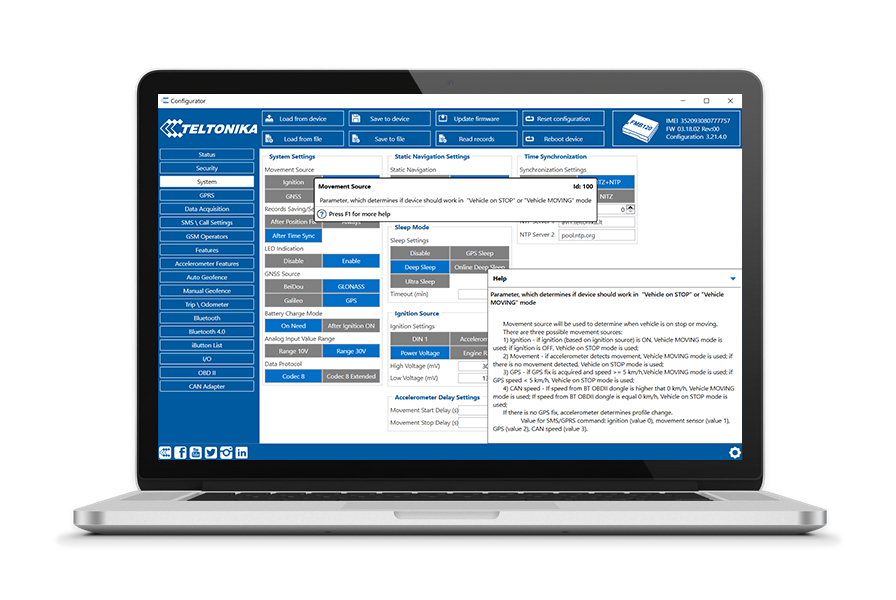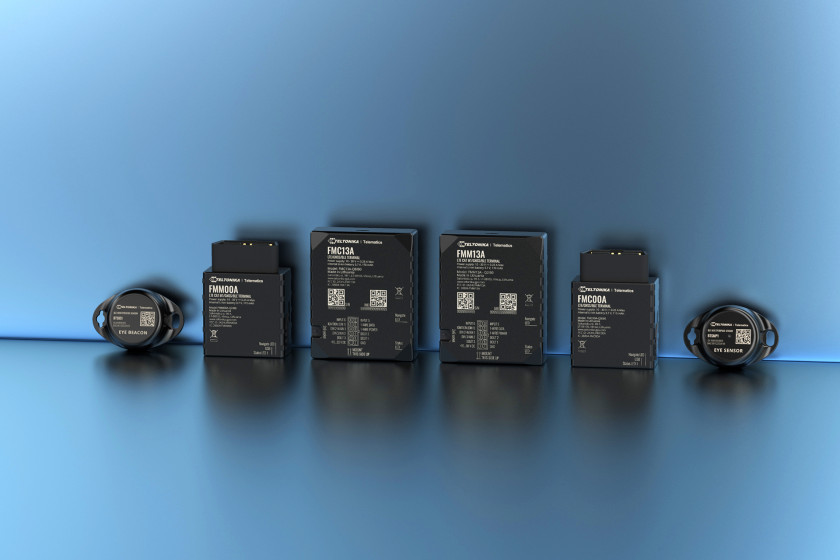Teltonika devices are the most popular on the flespi platform. As a developer who has worked with a wide variety of device models, I’ve got lots of experience with these tracking devices as well. I managed to help countless customers while also gaining an in-depth understanding of what these trackers are capable of and what common problems arise when using them. In this article, I will be sharing my knowledge and experience working with Teltonika devices, as well as several suggestions of what can be improved.
Initial connection process
Connecting a GPS tracker to a server for the first time can be a complex and challenging process. It involves a range of factors to keep in mind, from ensuring that the device has a power supply, a SIM card with a positive balance, and the right APN settings, to connecting all required sensors and antennas and verifying that the device can resolve the channel URI and access the Internet without restrictions. In some cases, the device may also require a GPS signal, being unlocked using a certain software tool, or being activated in some other way. With so many variables and potential issues, it's easy for developers and users to get stuck in the setup process and face data reporting delays or failures.
One of the biggest advantages of working with the Teltonika GPS trackers is the Configurator tool. It allows you to not only configure the device, but also get diagnostic information. The tool can do firmware updates, dump logs from the device to share with Teltonika tech support, download the configuration of the currently connected device, and apply it to another device. Additionally, the tool can be used as the documentation because tooltips show the IDs of configuration parameters that can be set remotely via setparam commands.
Valuable advice! If it’s the first time you configure your device, make sure to use the Configurator tool. It will not only make the initial connection easier, but will also give you a better idea of your device possibilities.
One of the main drawbacks of the Configurator tool though is that it is not always available. For example, the device may be already installed on a vehicle which is driving in the middle of nowhere, making it difficult to use the tool (this is where flespi remote configurator can help). Additionally, the Windows-only version of the tool can be a limitation for developers who prefer to work on a different platform. For instance, I, as a Linux person, am forced to use a Windows virtual machine with USB connection throughput by VMWare. You might say that I can install it to Linux via Wine, but the configurator can be used for complex actions, and I don’t want to break down my tracker during the FW update. And it is not only about Linux, think how cool it would be to have a Teltonika Configuration tool on iPad or Android tablet!
Devices variety
One of the great advantages of Teltonika devices is their variety — they offer distinct models in virtually all niches: vehicles, scooters, personal tracking, car sharing, electric bikes, and asset tracking. Devices also vary by installation method, including wiring (for robust professional devices), OBD plug and play, special scooter jacks, car accumulator battery, and magnet for hidden mounting. This means that, most likely, you will find the device that fits your needs. One caveat is that in the past, it was hard to transfer great features from one device to another, which could cause problems for specific use cases such as scooter sharing or car sharing. However, with the recent announcement of the GPS and SAS departments merging, it is expected that unifying development efforts may bring valuable features to all devices, including the popular FMB series.
I can’t even imagine how hard it is to manage such a park. So many firmware versions, constantly emerging features, documentation. To the honor of Teltonika, they do a great job of keeping it all in a regularly updated online resource called Wiki (while most manufacturers traditionally send updated protocol specs as PDF). So, in most cases, Wiki fully covers all basic customer needs, but not mine ;) Since I regularly work on implementing the newest features, I sometimes find myself ahead of this official resource and need to contact Teltonika representatives directly to get the answers.
Codec
As a protocol developer, I have had a chance to work with hundreds of GPS trackers, and I can authoritatively conclude that Teltonika's Codec 8 protocol is one of the best ones in terms of usability. It is a binary protocol that is both efficient and easily extendable, which is vital when dealing with large amounts of location data.
One of the strengths of the Codec 8 protocol is its architecture, which allows for easy extension without breaking parsing. This is crucial when dealing with new features and data types. Additionally, the protocol is highly optimized for data usage, ensuring that data transmission is efficient and reliable.
Once I wrote the code to parse the protocol structure, everything left to do is to operate with parameter IDs. This makes development faster and more straightforward, allowing developers to focus on creating innovative solutions rather than dealing with parsing complexities.
One potential drawback of the Codec 8 protocol is that it may be complex for developers who are not familiar with byte streams, checksum algorithms, and the conversion of bytes to different types. For these developers, using the code provided by Teltonika or obtaining data via the flespi REST API may be a better option.
Another challenge I have encountered when working with Teltonika trackers is that different device models use the same IDs for different parameters. This does not allow for writing the same code for all device types, so the parsing scheme depends on the device model. This can be time-consuming and frustrating for developers, leading to issues with data parsing and interpretation.
This is where flespi comes in as a valuable tool. With flespi, developers can rely on a unified approach to parameter handling across different Teltonika device types. Flespi can normalize the parameters for all Teltonika models, ensuring that there are no discrepancies in data interpretation.
This is a significant advantage for developers and businesses looking to integrate Teltonika trackers with their IoT platforms. By using flespi, the integration process is streamlined, and the data is consistent and accurate across all Teltonika devices.
In conclusion, while there may be some complexities associated with the Codec 8 protocol, the benefits of using Teltonika trackers, combined with the flespi platform, make for a powerful and effective GPS tracking solution.
Features
Teltonika devices are feature-packed and include everything you may need in a GPS tracker. With features like ignition detection, different report modes for home and roaming networks, green driving, crash trace from accelerometer sensor, TLS for connection, and support for all types of sensors and beacons, it's hard to find a feature that's missing. Teltonika developers also experiment with new functionality to test new markets, such as their solution to control social distancing using BLE signals during the COVID-19 pandemic (sure the pandemic is over now, but imagine what a short time-to-market for a new feature — its amazing!)
However, Teltonika devices can be difficult to configure due to non-obvious dependencies. For example, when setting up a manual odometer value on the Trip/Odometer tab, the corresponding parameter must also be activated at the bottom of the I/O tab to ensure that the expected data is sent. Another common issue is that some parameters on the I/O tab with IDs higher than 255 may not be sent by default, and require the user to enable codec 8 extended. While these issues can be resolved with careful configuration, they can cause significant delays and frustration for users. I assume that some automation on the device configurator side may be done there. And making codec 8 extended the default will definitely solve many questions before they arise.
Conclusion
While there are certainly some shortcomings with Teltonika devices, I believe that they are among the best on the market (it’s so unfair they are only sold in the B2B market — I wish I could buy them in a supermarket near USB car chargers). As a developer who has worked with many device models and helped numerous customers, I can attest to their reliability, performance, and flexibility. However, like any technology, there is always room for improvement, and in this article, I've shared some of the most common issues I've encountered with Teltonika devices, along with potential solutions. By addressing these problems, I hope to make these already excellent devices even better and bring them closer to perfection that all developers strive for.



